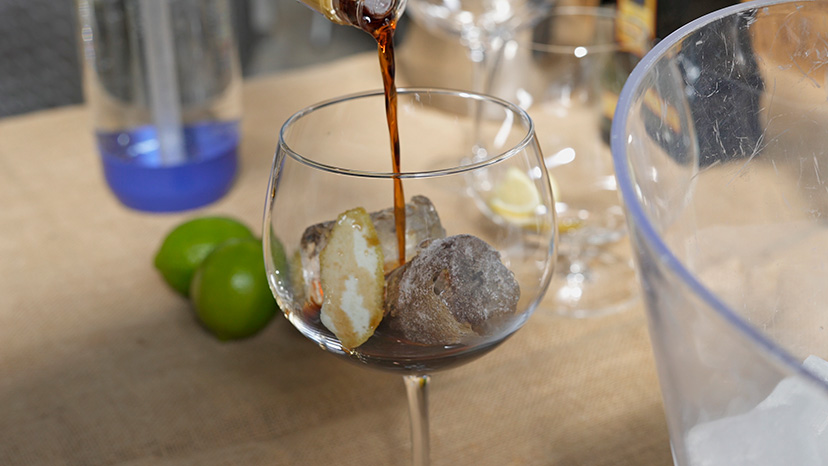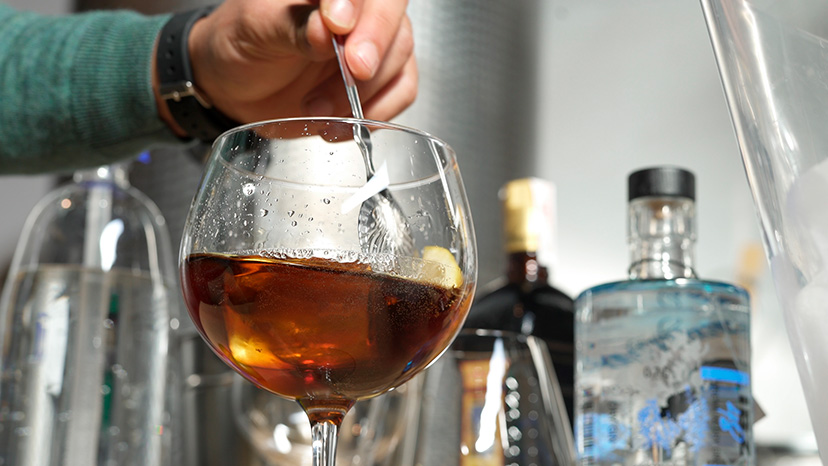Palo is the Ibizan aperitif par excellence, perfect for whetting the appetite just before your meal. This drink is back in fashion, as the vermouth culture, the typical custom of enjoying a vermouth at lunchtime is coming back, and it has many new fans as well as faithful adherents.
The most traditional way of enjoying this drink is in a wine goblet or a tall glass, with a slice of lemon squeezed, with all its juice, some ice cubes, and two or three drops of gin. If that is a bit strong, try adding soda water, lemonade or sparkling water, which reduces that bitter note and brings out the sweetness of the drink. Ibizans have always turned to this drink at those special moments and today it is being rediscovered by new generations who have revived and are enjoying the traditional drinks of the island.
The name comes from quinine bark (known as “palo quina”), originally from South America, and it was introduced to Spain by the Countess of Chinchón who was taken ill in Lima in 1638 and she was treated with quinine and recovered. When she returned to Spain, she brought the quinine bark with her and it became very popular, spreading to other countries in Europe.
The Balearic Islands had many swampy coastal areas which were an ideal breeding ground for mosquitos, who carried the “fevers” or ague, and so the extracts of quinine and gentian were well received, introduced by traders who visited the islands to exchange spices and other products as a remedy for combating fevers.
Over time, and in order to improve the unpalatable taste of these extracts, concentrates of grape sugars, dried figs and carob were added. These sugary extracts were reheated in order to concentrate them, and as a result, the sugar caramelised and darkened, and the flavour obtained masked the bitterness.
This syrup has a short life span, as the product fermented easily and so it was decided to add alcohol. That is how Palo was born, and little by little, the amount of quinine and gentian was limited, and the alcohol and sugar content increased.
The result was a dark and very dense alcoholic drink with a characteristic aroma obtained by hydro alcoholic maceration of quinine and gentian, and with the addition of caramelised sugar. It is one of those drinks that you need to try if you visit the island, to be savoured with some delicious olives or potato crisps made in Ibiza.

